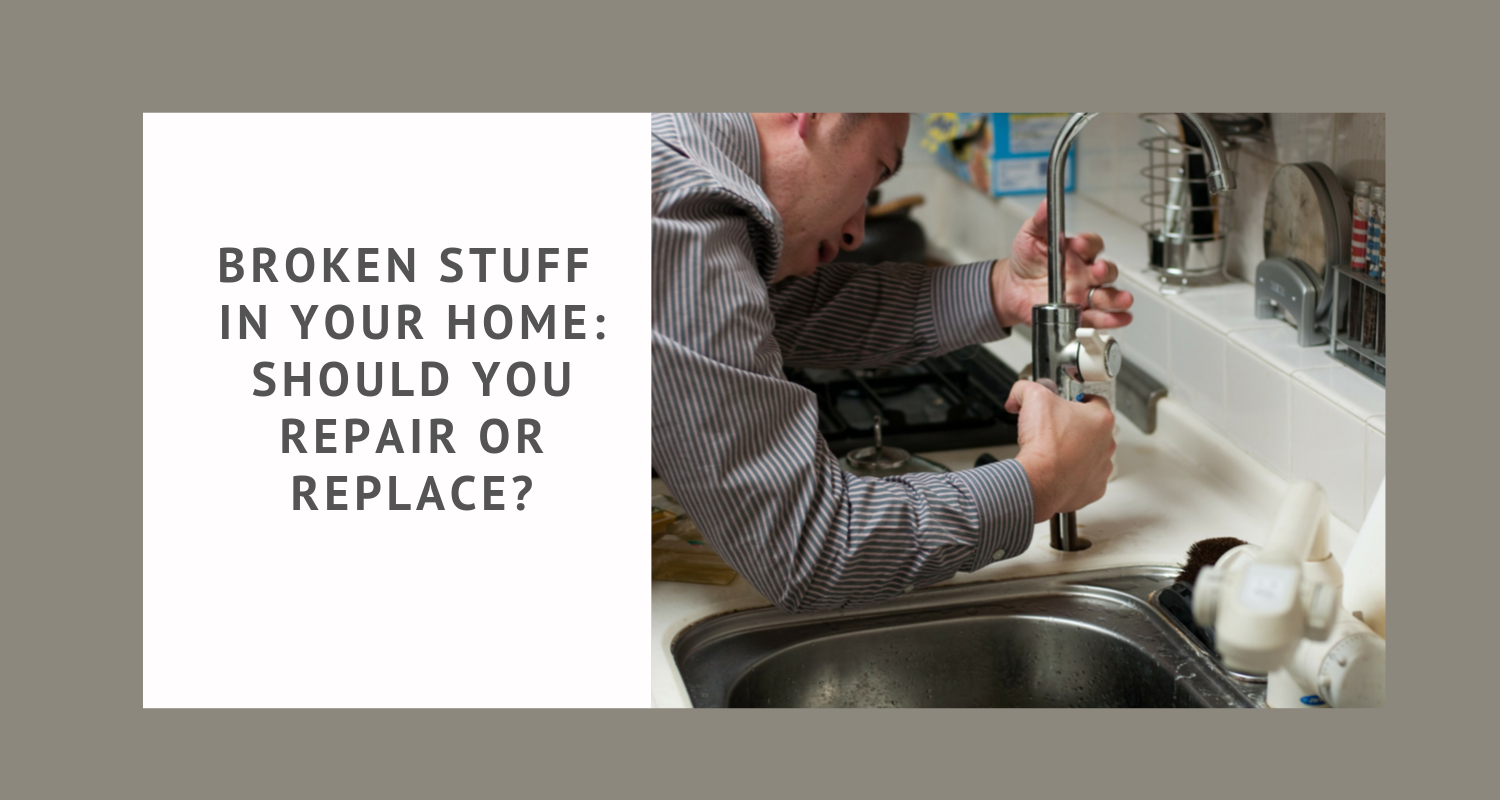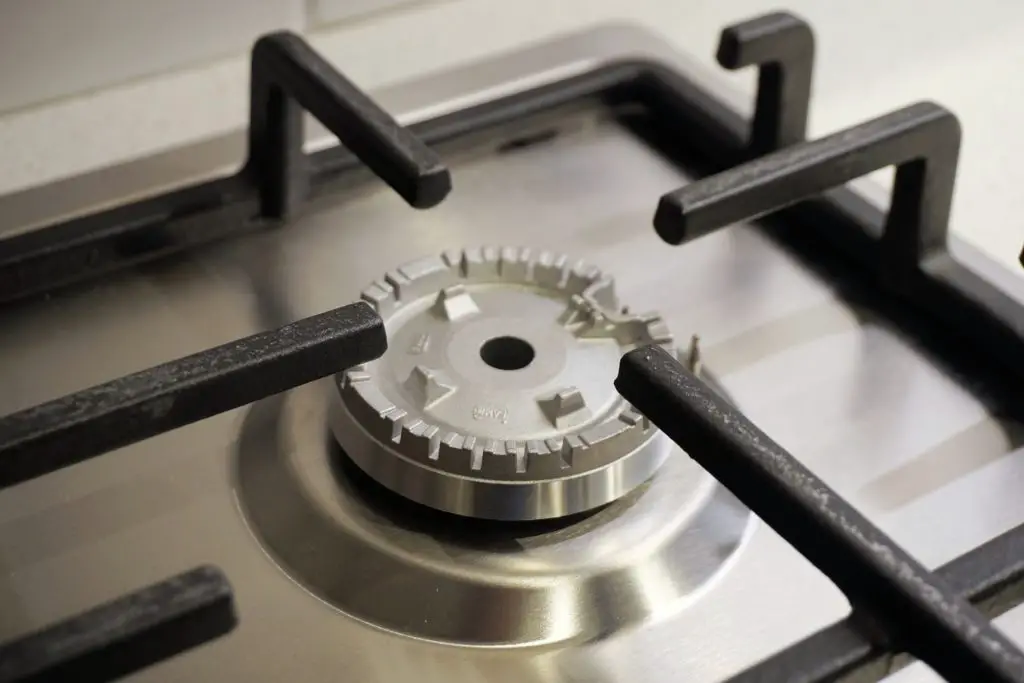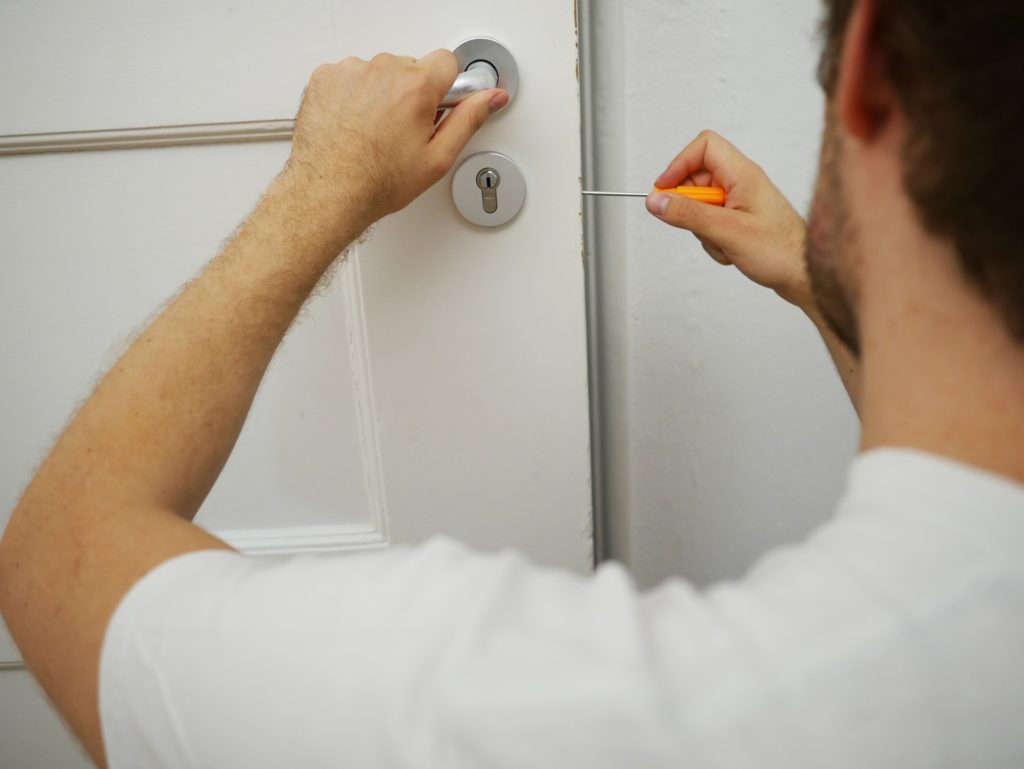
Broken Stuff In Your Home: Should You Repair or Replace?
When something breaks or gets damaged in your home, it can be useful to know when to repair and when to replace. Choosing the right option could save you time and money in the long run. This guide looks at some of the most common things to break around the home – and what you should do in each case
A few general tips…
There are a few general tips that can help you to determine whether to repair or replace something:
- The 50% rule: If repairs come to more than half of the cost of a replacement, it’s usually more sensible to replace the damaged item. For instance, you don’t want to be paying $200 for washing machine repairs when you could pick up a new washing machine for $300.
- Consider its age: Everything from roofing to appliances has an expected life, after which wear and tear is likely to become more noticeable and severe. Certain items over a certain age may also be notably less eco-friendly or less efficient. By considering the age of the item or fixture, you may be able to determine whether it’s worth repairing or replacing (this guide looks into some of the recommended replacements ages of individual items to give you a more specific idea).
- Who is liable?: If you’re renting, many fixtures may be the responsibility of your landlord to repair or replace, providing that you didn’t cause the damage yourself. There may also be times when repairs are covered by a good home warranty or home insurance. This is important to consider.
An individual breakdown
Knowing when to repair or replace will often depend on the specific item that is broken and to what extent it is damaged. Here are few specific examples of things that can break in the home and what your best course of action is.
Flooring
When to repair:
When it comes to wooden flooring, it’s almost always more economical to repair. Refinishing can be a great way of getting rid of marks and scratches on an old floor – this involves sanding the wood down and reapplying a finish.
As for carpets, many tough stains can usually be removed by investing in a carpet cleaning company. If you have carpet tiles, it could be a simple case of removing the tiles that are stained or damaged.
When to replace:
Wooden flooring that is over 25 years old may be more prone to more frequent damage such as boards cracking and breaking, although high quality flooring can last a lot longer. If many of the boards are breaking or getting warped, you may find that a replacement is the better option.
As for carpets, these tend to have a life of 15 years. It may be beneficial to replace carpets that are ripped.
Roofing
When to repair:
Roof repair can be cheap if it’s just a case of replacing the odd tile or sealing up a single crack. If you fix the problem early, you can usually prevent further damage from occurring.
When to replace:
A roof may need replacing if 30% or more of it is damaged. Alternatively, if you’re having to fix frequent repairs you may want to consider the age of the roof. Slate, copper and tile roofs can usually last 50 years before needing replacing. Wood shake roofs meanwhile last roughly 30 years, while asphalt and fiber cement roofs last about 20 – 25 years.
Excessive water damage could be another sign that a replacement is needed. Flat roofs may need to be replaced entirely whatever the damage.
Plumbing
When to repair:
The occasional leaky pipe or blockage is normal and usually not a sign that you need to replace your entire plumbing system. Single repairs can be cheap and may even be possible to DIY. If you don’t feel comfortable doing repairs, research into ‘plumbers near me’ or call up a friend with plumbing know-how. Certain jobs like gas plumbing should always be left to a professional.
When to replace:
Unfortunately, pipes don’t last forever and there may come a time when you need to replace your entire plumbing system. The average life of copper pipes is 70 to 80 years, while brass and galvanised steel pipes can usually last 100 years before needing replacement. A few signs that a replacement is needed may include rust in the water, regular pressure problems, frequent leaks and a general brittle appearance of all piping.
Electrics
When to repair:
Much like replacing your pipes, rewiring a house is a big and expensive job. Fortunately, most damage requires only minor repairs. If you haven’t been experiencing frequent electrical problems and the issues seems to be contained to one part of your property, it could be a simple repair job. Electrical work is something you should never do yourself and you should always hire a qualified electrician.
When to replace:
Some experts claim that you should rewire your home every 25 years to be safe. As wires degrade, they could pose a fire risk or cause an electric shock. A few clear signs that your whole home needs to be rewired include frequent blowing and tripping, flickering lights and frequent electrical faults. Replacing all your wiring could also be recommended if it is aluminium – aluminium wiring often overheats quickly and could be a safety concern worth addressing immediately.
Appliances
When to repair:
Appliance repair can sometimes be costly and not always worthwhile. That said, there can be minor faults on certain appliances that are worth repairing. If a refrigerator isn’t cooling property or a washing machine is leaking, there may sometimes be a simple solution that could be worth calling a technician for (there may even be some appliance repairs that can be DIYed).
When to replace:
The life expectancy of appliances can vary depending on the type of machine. Here are a few of the most common appliances and their life expectancy:
- Gas oven 10 – 18 years
- Electric oven 13 – 15 years
- Refrigerator 9 – 13 years
- Freezer 10 – 20 years
- Washer 5 – 15 years
- Dryer 13 years
- Vacuum cleaner 8 years
- Microwave 10 years
- Toaster 6 – 8 years
Once an appliance reaches its life expectancy, a replacement is usually the wisest option. Not only will wear and tear become more noticeable at this point, but the appliance may become less efficient. On top of this, you could find that such appliances are much less energy-efficient than modern appliances – buying a new appliance could save you money in gas and electricity bills.
Of course, certain appliances may simply not be worth repairing regardless of age such as microwaves or toasters if they are broken. Such appliances are cheap to replace and you could spend just as much repairing them.
Bathroom fixtures
When to repair:
When bathroom fixtures become chipped or stained, many people replace them. However, there could be cheaper options out there such as reglazing and options like bathtub liners. As for leaky taps and faucets, these can usually be fixed without replacing the entire tap.
When to replace:
The age of the fixture is something to carefully consider. Certain fixtures may not only start to wear away more once they reach a certain age, but they could become less water-efficient (old toilets for instance may flush an unnecessary amount of water compared to newer toilets – splurging on a new toilet could save you money in water bills). The average life expectancy of bathroom fixtures is listed below:
- Cast iron bathtub 50 years
- Fiberglass bathtub 10 – 15 years
- Acrylic sink 50 years
- Porcelain sink 20 years
- Toilet 50 years
- Showerhead 5 years
Doors and windows
When to repair:
If it’s a case of a loose hinge, a broken lock or a broken glass pane, there may be no need to replace the entire window or door. Repairs could work out more affordable. Certain jobs like screwing in a loose hinge or replacing a broken door handle could even be an easy DIY job. Repair work on windows is likely to require more precision and so you may want to call up a professional for such a job.
When to replace:
If the frame of a window is damaged or the main part of a door is warped or cracked, it could be a sign that a replacement is needed. Old windows or doors (anything over 50 years old) may be worth replacing anyhow as such windows and doors may offer poorer security or poor insulation (if an old window is cracked, it could be the perfect opportunity to upgrade to double-glazed windows).
Tiles
When to repair:
Replacing tiles may not be necessary if it’s a simple case of tough stains or old grouting. If elbow grease hasn’t been able to get out stains, you may be able to a solution such as borax or a steam cleaner to try and get it out. As for discolored or brittle grouting, this can be replaced without having to replace tiles.
When to replace:
If the tiles themselves are cracked, then you should consider replacing them. As for a complete retile, this is usually not necessary unless tiles are particularly old (most tiles have a life expectancy of 75 years).






2 Comments
This is super helpful information! Thank you for compiling such a comprehensive list 🙂
You are welcome. Glad you found it helpful.